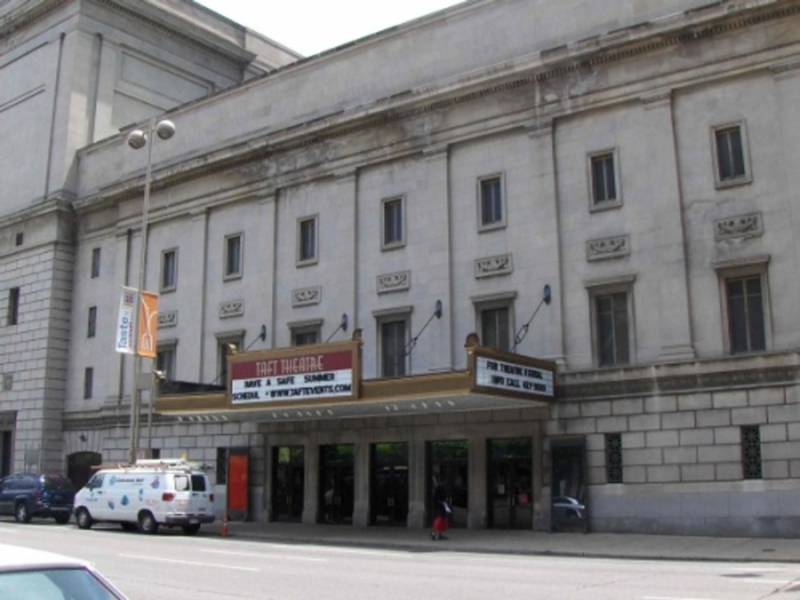Stepping into the decorated light cast from the looming ceilings of the Taft Theatre, it’s immediately apparent the space holds memory far outreaching your own. That is, of course, unless you’re about 100 years old and happened to be around Cincinnati in your early teens.
If that were the case, you’d probably remember the other awe-inspiring theaters that entertained the Queen City in those days: the Albee, Shubert and Capitol, to name a few — all astounding architectural representations of the heyday of local theaters. Sadly, the Taft is the only of those grand structures that still remains today, likely because it stands just far enough away from the heart of downtown, just missing out on the urban redevelopment that has defined the city for the past half-century or so.
Taft Theatre was opened in January 1928, inaugurated by lines of suited men and flower-hatted women who were willing to brace the 40-degree weather of the new year for the warm spectacle of the Cincinnati Symphony Orchestra in a shining new entertainment venue.
The theater is part of the Cincinnati Masonic Center, then called a temple rather than center, and is currently owned by the Scottish Rite of Freemasonry. In its early days it would host Broadway shows, ballets and traveling performers and artists, among other entertainment.
The name, contrary to what some might think, is not a nod to the former United States president William Howard Taft, although many likely know of the street we have to honor him. Rather, the theater was a tip of the hat to William’s older brother, Charles Phelps Taft, a major figure in the Cincinnati newspaper business and a high-ranking Mason who lived just down the street from where the theater now stands.
While it was very popular during its early days and became popular again in the new millennium, the theatre went through a largely dormant period in the second half of the 20th century. In fact, the Scottish Rite applied for demolition rights twice in the 1960s — although they were rejected both times — because they thought the theater would be too expensive to renovate and wanted to replace it with a parking garage.
Luckily, it hung on and didn’t fall into serious disrepair long enough for Music and Event Management, a subsidiary of the Cincinnati Symphony Orchestra, to take over in 2010. The company headlined a $3.2 million renovation, less than a third of the value the Masons had been quoted for renovations decades earlier.
The revamp, finished in 2011, increased the size of the seats, lowering the original capacity of 2,500 to about 2,300, as well as the size of the bathrooms — fewer venue seats, but more toilet seats (does this say something about the needs of folks in the new millennium?). They also took great consideration of modern concerns, spending a heavy load on hooking the building up with eco-friendly air conditioning.
Thanks to the restoration and rejuvenation of the old theater, it now holds about 140 shows a year compared to roughly 90 before renovations, and the annual attendance has also almost doubled. The theater is again one of Cincinnati’s hot spots for entertainment, hosting all kinds of musical concerts as well as theatre, being home to the Children’s Theatre of Cincinnati. With the upsurge in activity at the beautiful old Masonic Amphitheatre, the tall walls can keep holding and building memories of entertainment that life would be oh-so boring without.






